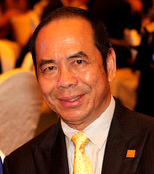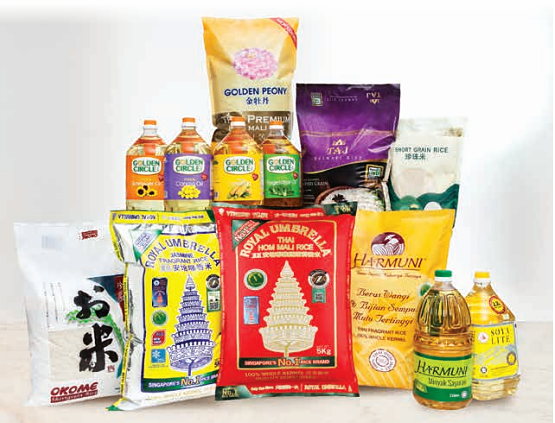"Money Plant" contributed this article to NextInsight. She has not met management, and the article is based on her own analysis and assumptions.
|
While there are lots of challenges facing Hanwell, its stock price has come down to a level which is reasonable from both a fundamental and technical perspective: S$0.20-0.23.
|
|
Positives |
Negatives |
|
Successfully polished up the consumer segment’s profitability: After closing franchise outlets and improving its product mix, Hanwell started to see an improvement in its consumer business in 2016, which continued into 2017. Segmental profit before net finance costs, associates and tax (PBIT) was S$6.6m in 2016 (FY15 S$1.3m) and PBIT was S$7.5m in 2017. |
Consumer business may see pressure on margins: In its outlook statement, Hanwell highlighted that prices for rice and recycled pulp paper rose in late 2017, but the price increase is lagging behind the increase in cost of these commodities.
|
|
Owns 63.9% of Tat Seng which had an exceptional FY17 and saw profit rose 40% y-o-y aided by the rise in revenue from its China operations which benefited from the surge in selling price of corrugated board and rise in sales volume.
Worth noting: Tat Seng is not trading at crazy valuations at 1x P/B and 6-8x PE. In addition, the group has been profitable all these years even through financial crisis (since 1999). |
Cyclical nature of its packaging business. Chinese peers like Nine Dragons, despite recording record profit, saw their share prices under pressure, as analysts worry the rise in prices over the last few years is unsustainable and the restriction in import quota may also impact margins (more for smaller players like Tat Seng). |
|
Management is exploring other business (in Japan), putting its cash war chest to use (finally). The group recently bought a small investment property for S$6.9m in Osaka, and highlighted that the property has the potential to be a core investment of the group, and would be utilised by company as a stepping stone to expand its food business in Japan. |
Misuse of cash or money losing investments. Not sure if management has the expertise in the food business in Japan.
|
|
After ceasing paying dividend in FY12, Hanwell resumed with a small dividend in FY16.
Though dividend yield in FY16 was only 1%, that and recent corporate actions such as investing in Japan property are positive moves. Hopefully its new business in Japan can provide a new stream of income and boost profitability and future dividends. |
Cut dividend by half to 0.25 cent a share in FY17. The group did not pay any dividend from FY12-FY15.
Not too sure why but the variability in dividend is indeed a key risk, especially given the huge amount of cash sitting in the bank, and Hanwell stopping dividends in FY12 only to resume with a small 0.5 cent in FY16. |
|
A major shareholder (Sam Goi) bought shares recently at about S$0.215, signaling confidence.
Cash attributed entirely to Hanwell only and potential remaining net cash receivable from asset held for sale (where Hanwell has already received 2/3 of the total sales proceeds) is S$0.227/share which hopefully also help form a “base/floor” to valuation. |
|
 Billionaire Sam Goi's son, Kenneth, is a non-executive director of Hanwell.What is interesting recently? One of the major shareholders, Sam Goi, recently purchased shares from the market at S$0.215. He has a 16.1% stake in Hanwell.
Billionaire Sam Goi's son, Kenneth, is a non-executive director of Hanwell.What is interesting recently? One of the major shareholders, Sam Goi, recently purchased shares from the market at S$0.215. He has a 16.1% stake in Hanwell.
A look at Hanwell assets. It is trading at 0.47x P/B.
- S$0.17 net cash can be attributable to Hanwell (after accounting for Tat Seng’s portion of net debt) vs share price S$0.23
- 63.9% stake in Tat Seng worth S$75.3m (S$0.136/share) - Tat Seng is trading at 1x P/B 5.8x FY17 PE, 8.1x FY16 PE (that is paying Hanwell S$2-3m/year in dividends)
- Remaining cash payable that will be received from asset held for sale S$17.8m (S$0.03/share) – already received HK$200m (S$33.8m)
- Consumer business has improved since 2016 (Continued improvement in 2017 due to closure of franchise outlets and improved margin from pricing advantage and margin mix) generating about S$4-7m segmental PBT in FY16-FY17.
*noted has unallocated HQ expense of about S$5-9m p.a. for 2016 2017. (rise in HQ expense in 2017, have to see this year, if the rise and amt is sustained, not sure if it’s due to the group’s expansion plans as they become more active)
S$0.17 net cash that can be attributable to Hanwell (after accounting for Tat Seng’s portion of net debt).
Hanwell owns 63.9% of Tat Seng, hence it has to consolidate the results and balance sheet of Tat Seng. However, it is very clean cut, esp since Hanwell and Tat Seng both have the same year-end. A simple comparison will show that all the loans on Hanwell balance sheet actually belongs to Tat Seng. On the group level balance sheet, Hanwell has S$0.156/share of net cash.
• S$0.195/share net cash actually belongs solely to Hanwell.
• Tat Seng currently is in a net debt position of S$21.4m. If we attribute 64% of Tat Seng’s net debt to Hanwell, net cash of Hanwell’s shareholders will be S$0.17/share.
|
Hanwell |
Tat Seng |
|||
|
12/31/2017 |
12/31/2017 |
|||
|
Cash |
147.91 |
40.02 |
||
|
Loans |
(61.45) |
(61.45) |
||
|
Net cash/(debt) at group level |
86.47 |
0.156 |
net cash/(debt) |
(21.42) |
|
|
|
|
|
|
|
Net cash attributable solely to Hanwell |
107.89 |
0.195 |
||
|
Net (debt) due to 64% stake in Tat Seng |
(13.69) |
(0.025) |
||
|
Net cash attributable to Hanwell |
94.20 |
0.170 |
Remaining cash payable that will be received from asset held for sale S$17.8m. In Hanwell’s balance sheet, there is an asset held for sale. That relates to its 49% stake in Million Cube which was proposed to be sold since Mar 14. Not sure the reason behind the delay in payments but, in brief, the disposal was for a sum of HK$307m.
The purchaser has already paid (non-refundable) in tranches a total of HK$200m to Hanwell (receipt of cash accounted for in cash and non-refundable deposits in payables). Hanwell is expected to receive another HK$107m (S$18m or S$0.03) when the disposal is completed. Click announcement.
A list of assets- Co. is trading at 0.47x P/B (NAV: S$0.5025)
|
S$m |
S$ per share |
|
|
|
Hanwell's 63.9% stake in Tat Seng market value |
75.338 |
0.136 |
|
|
40% holding co. discount |
(30.135) |
(0.054) |
|
|
Hanwell's stake in Tat Seng market value (after 40% holding co. discount) |
45.203 |
0.082 |
|
|
net cash attributable solely to Hanwell |
107.890 |
0.195 |
Ignored net debt attributable to Tat Seng, since its accounted for in MV of Tat Seng |
|
remaining payable from asset held for sale |
17.833 |
0.032 |
|
|
consumer business* |
18.782 |
0.034 |
Used Consumer segmental PBIT of S$7.5m, and applied a 17% tax rate |
*FY17 PBIT has FX loss of S$3.5m, there is also unallocated HQ expense of S$9m for the group in FY17. 2018 is also expected to be a challenging year for consumer segment with margins affected by hike in cost of rice globally. So use a conservative 3x PE.



